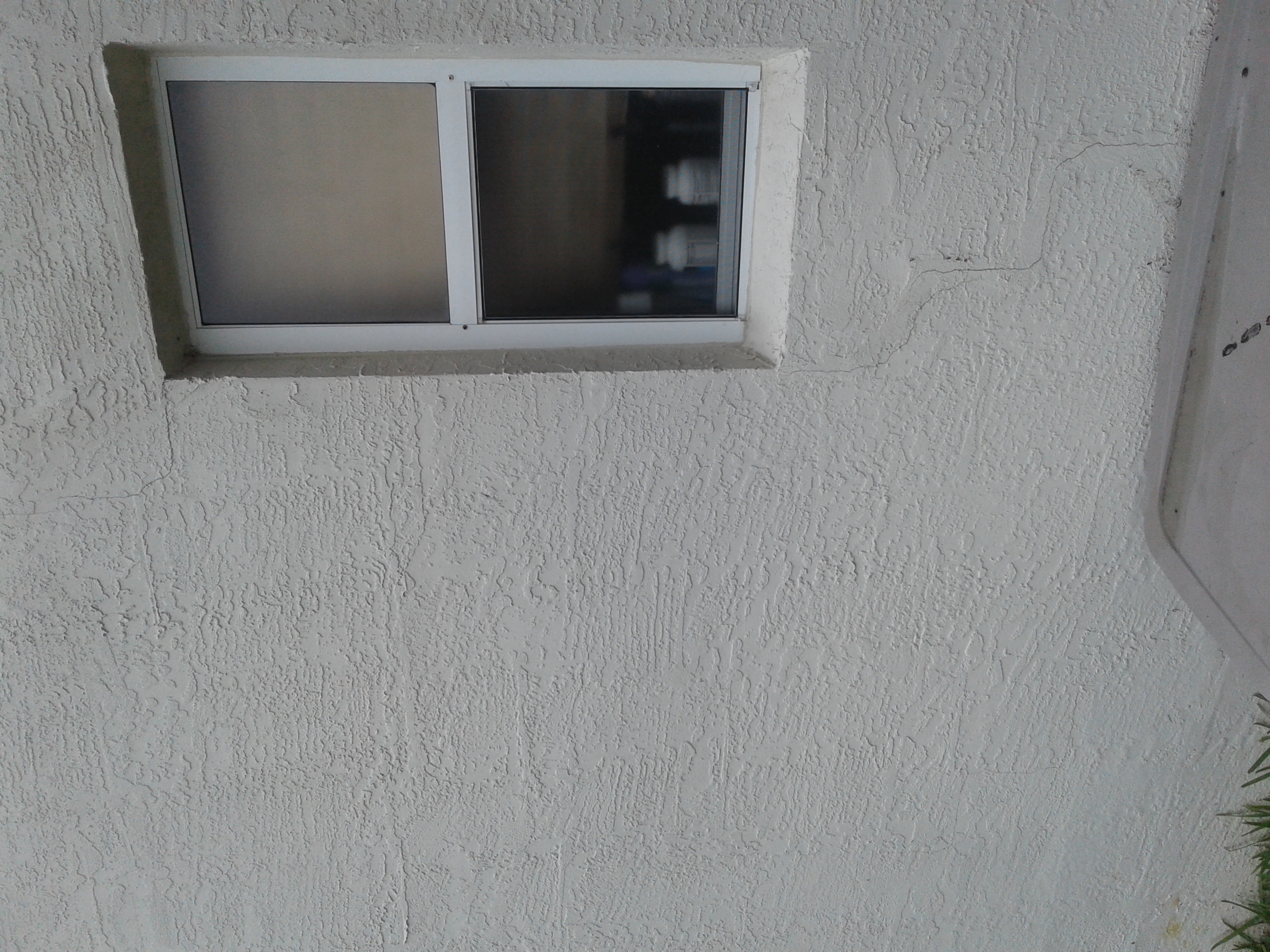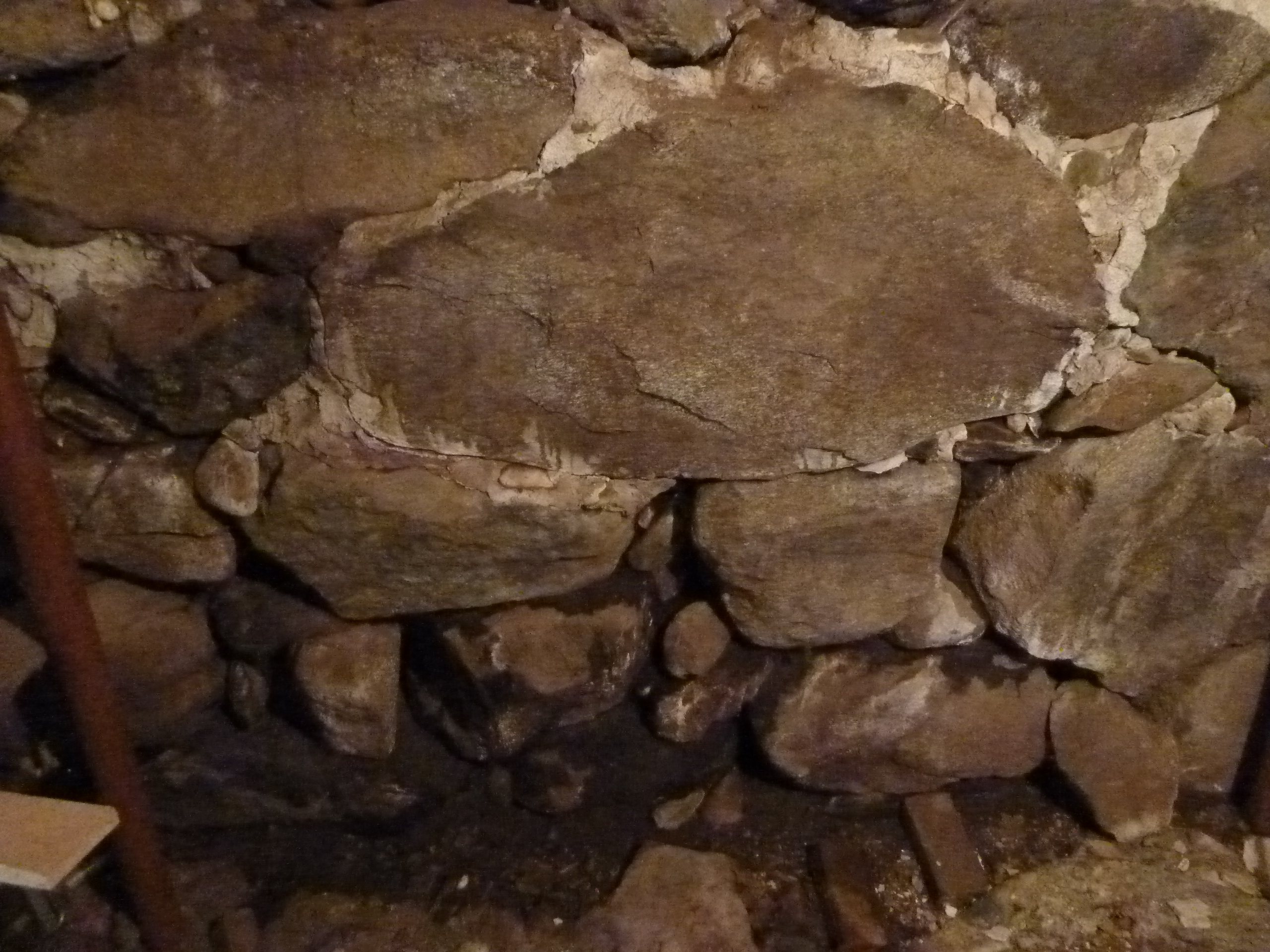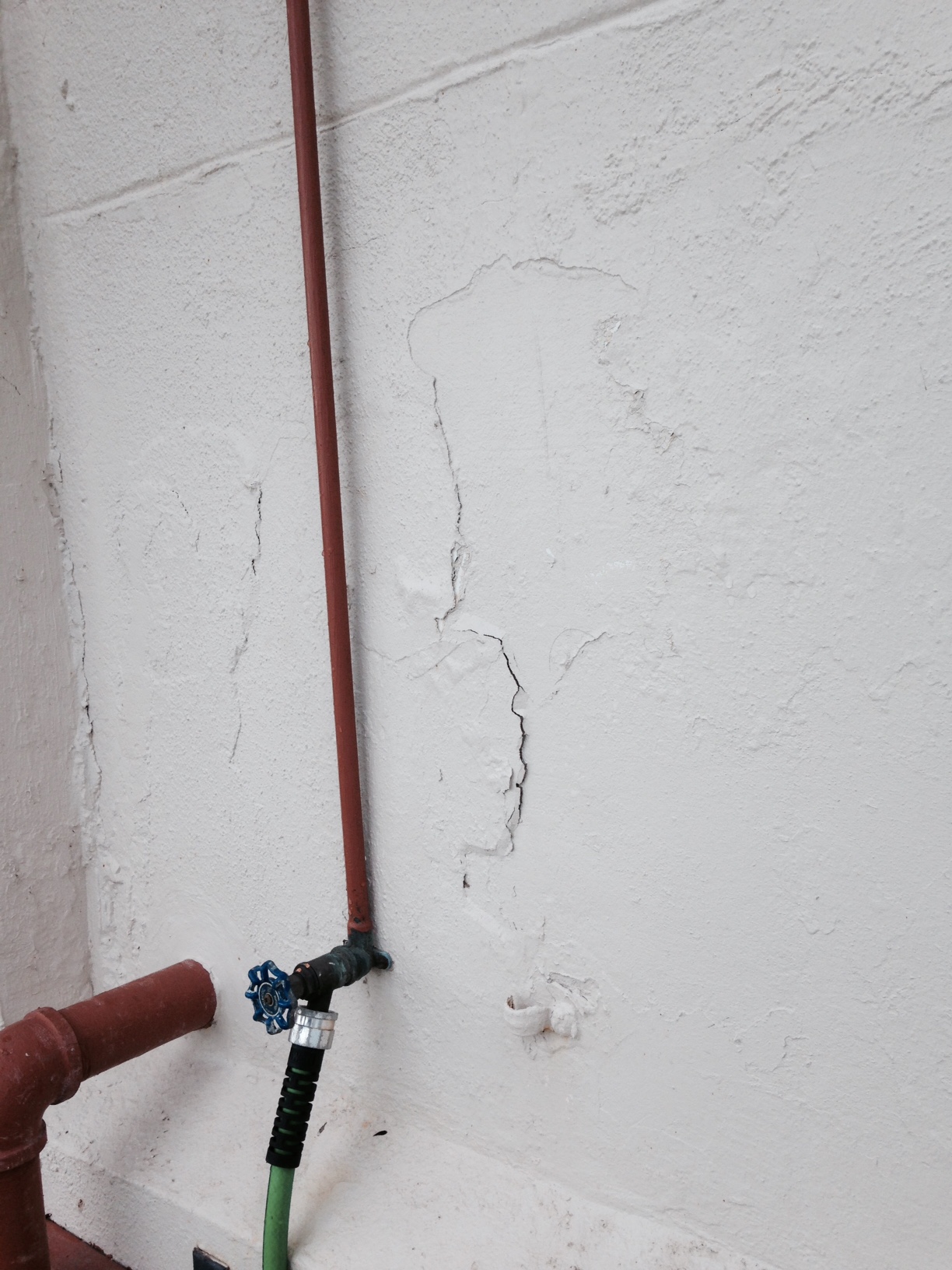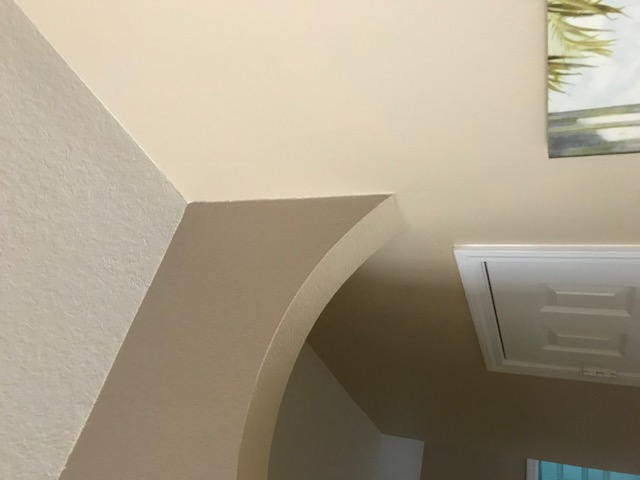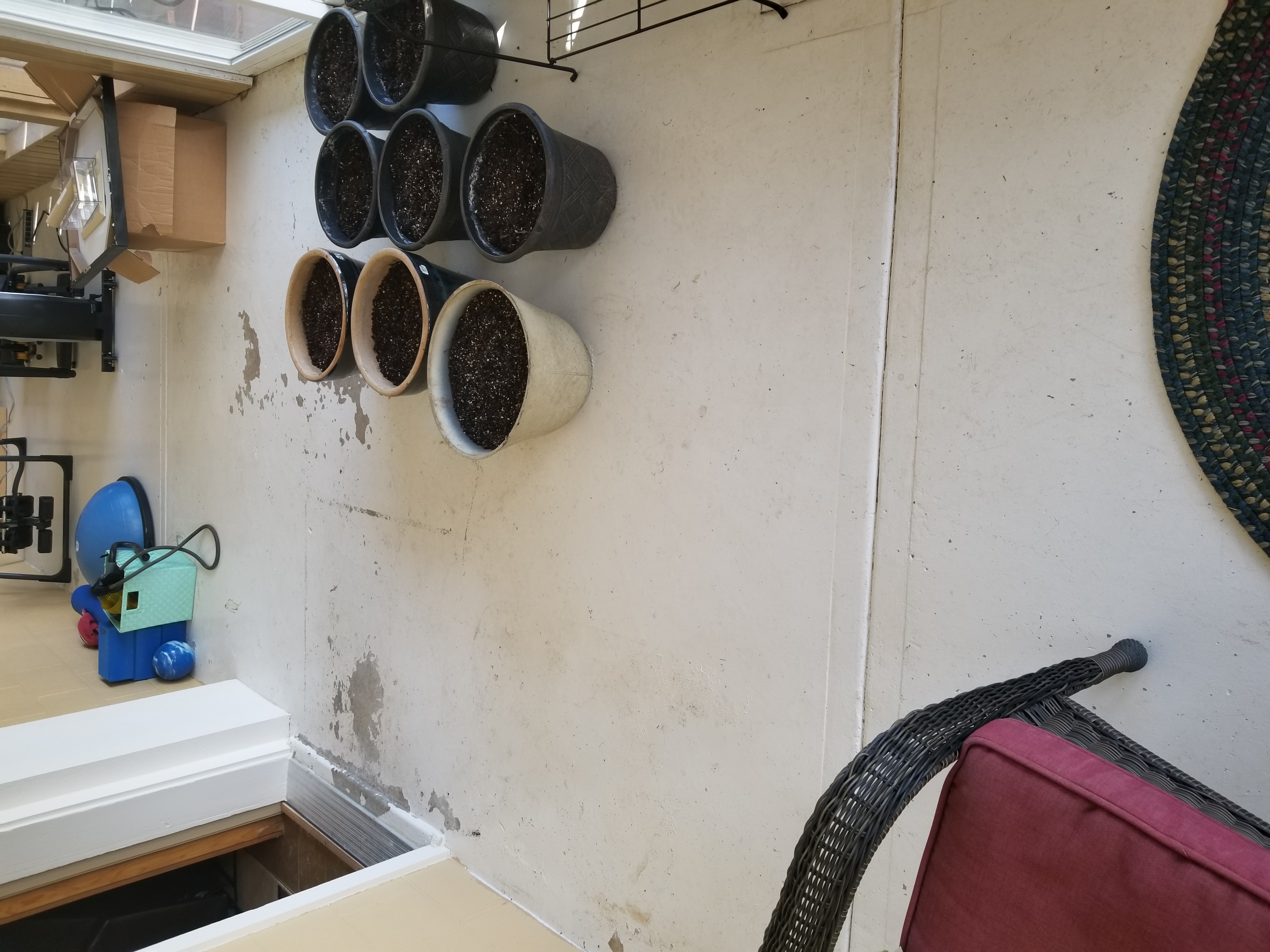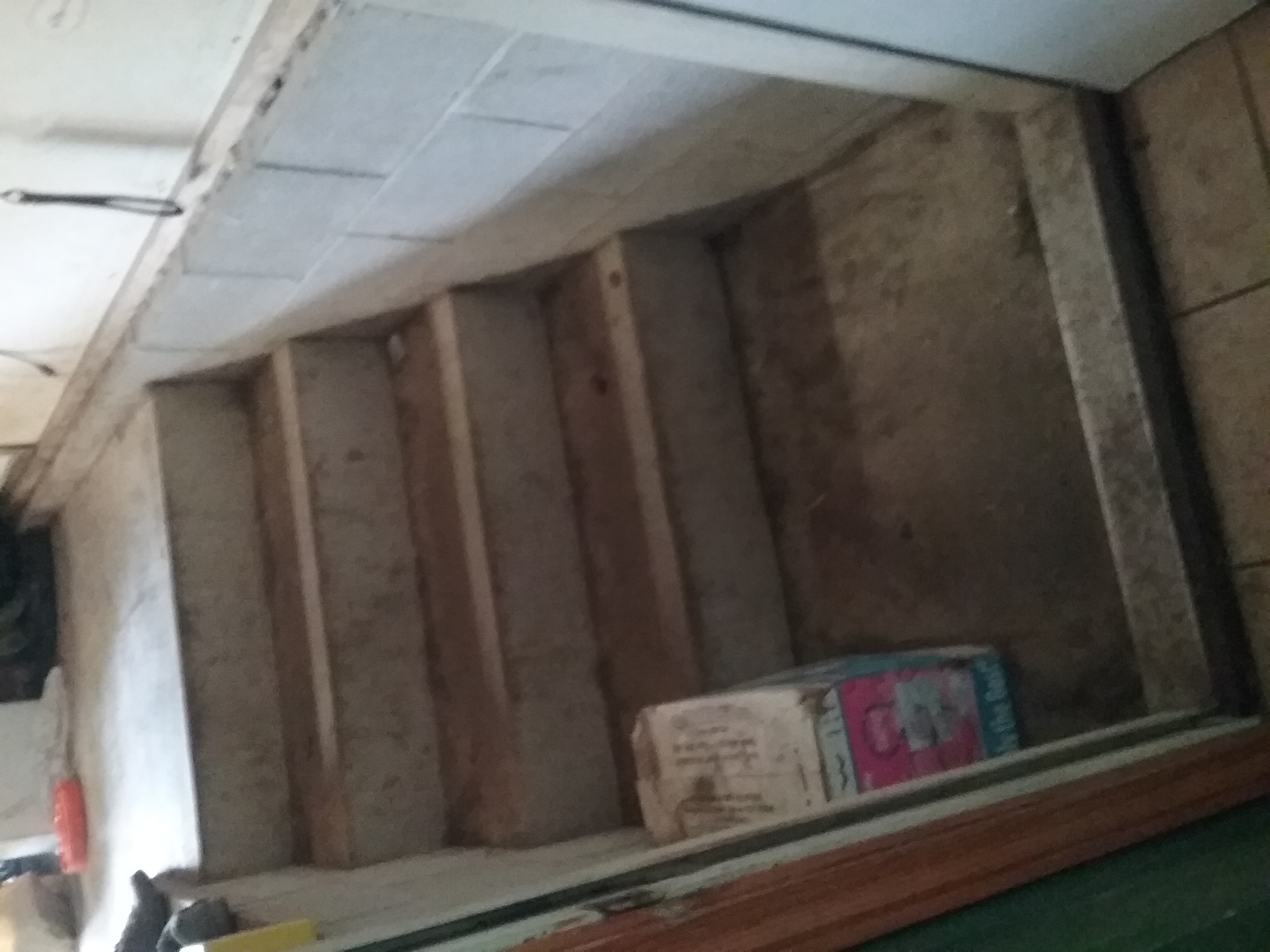There is a crack in this block wall close to a corner of the building there is also a similar crack on the other side of this corner possible settling of ground from rain water. Recommend consult from a professional for further examination.
i read about energy star and how they are so easy to defraud some one submitted for a oversized gas powered alarm clock and it passed certification lol are we for real people nowadays you have to be a scientist and an investigative lawyer in order to make a good product purchase.
This is a photo of an old field stone foundation. There is clear indication of moisture intrusion, and it would be recommended that exterior drainage be added to reduce the ground water that is penetrating the structure. Some portions of the foundation were mortared in the past, but it has deteriorated, and this should probably be addressed after the moisture intrusion has been remedied.
Article on French Drains: French drains can be an effective way of mitigating excess near-surface ground water around a home. French drains may be used to direct gutter downspout flow away from the foundation. French drains are likely to be buried, and are often beyond the purview of the home inspection, but inspectors should look for signs of surface flooding or water intrusion at the foundation, which may be signs of inadequate or blocked drains. French drains must have a means of expelling thier water, either by gravity (down slope) or pumping to a suitable drainage location, French drains must not be directed to the nomal household waste system (whether sewer or septic) and may need approval from the state or local licensing authorities.
This photo show spalling in a poured in place concrete wall. It was most likely cause by water leaking from the hosebib supply line seen in the photo. Treatment would include chipping away all damaged concrete, treating with ospho or similar rust preventer then patching with a high strength concrete patch.
Inspecting chimneys is a rare event in southern florida. With that in mind it is still important to ensure that all codes were complied with including distance to combustibles, proper securance to the structure and any required chimney caps whether manufafturer supplied or provided during the mansonry construction of the chimney.
This is not a stone foundation wall. Some some foundation walls are made of fieldstone or limestone. They can fail over time and might need to be repaired by re-pointing. The term for them failing or falling apart is spalling.
There are many ways that concrete is used. It also can have different admixtures to it in order for proper use. It can be different in various temperatures and climates. Concrete can be used for foundations and piers. It is more complicated than I thought.
Concrete Admixtures
The process of using admixtures to concrete are as wide ranging and complicated as there are materials to try. It reads more like specialized science experiments than building alternatives. I am confident that there will be combinations of admixtures found for any special building application.
This concept of admixtures for concrete is intriguing. I found an article online that outlines more than 20 different classifications for admixture types based on their desired effect. There are commonly used admixtures that can move the needle in either direction to create almost any variation desired - air content, water content, freeze protection, weight, setting time, shrinkage, flow-ability, color and many more.

BASEMENT FLOOR:
Judging from the age of the building and no-floating walls. The basement floor is a rigid concrete slab. Slab is in acceptable condition, although small cracks were observed. This cracking is typical and normally not structurally significant. Note that no drain was located during inspection. Typical for age of house.
ELECTRICITY SAFETY:
Electricity is an essential part of our lives and will function almost indefinitely if properly installed and not overloaded. Some safety tips to remind our clients is, use proper fuse, don’t place extension cords under rugs, outlets near water should be GFI outlets, and stay away from power lines. If their is any children it is important to teach them early of dangers and install safety plugs in outlets. Encourage your clients to educate themselves of safe practices.
I’ve provided an image of horizontal cracking in a foundation. This could be caused by a variety of factors. While it is not the responsibility of the Inspector to speculate the cause, it is important that the cracks are present in the report as it indicates that the foundation wall, which carries a portion of the structure above, is bent or broken. this could be a major issue regardless of what caused it.

I read about the history of Vinyl Siding and what to look out for during an inspection. As is the case with all siding, vinyl siding offers both pros and cons. A major con and often times a cause for concern during an inspection is how it’s installed. On the other hand, if installed properly this siding is very durable and can last for many years.
This brick pillar has moved quite a bit, from either expansion or heaving.The mortar joints are cracked and the bricks have shifted . Water can enter the cracks and cause more damage and maybe even collapse. I would recommend licensed contractor or engineer look at this.

The Lanai pictured at the time of inspection was in good condition, all screens were sealed and in tact; door closers operated properly. As a consideration the south side entrance door handle was secure however was missing the bottom handle screw. The tension wires were taunt and securely fastened.

Moisture meters are useful tools in an inspectors tool bag. Moisture meter can come in a “pin” type or a “search mode” type as some manufactures combined both in one meter. Moisture meters can be useful to determined active leaks that could go undetected without the us of the device and determine if a material is moist enough to promote mold growth.
Adjustable steel columns are a great invention. They can take the place of concrete columns and are adjustable . If there is some settling or movement they can be adjusted . They should be at least 3 inches wide and corrosion resistant.
Upon inspection of cinder block wall found no visible cracks vertically or horontally nor step cracks. Block and mortar appear in good shape. No evidence of water staining or effloressence. Found no drain at bottom of steps, would recommend a drain for this area.
With Platform framing in use today the stories of the house are built on top of each other. The wall studs fasten to the sole plate. With baloon framing from the late 1800’s to early 1900’s the vertical studs ran from the sill to the roof. Post and beam is used but more towards barns and churches.
